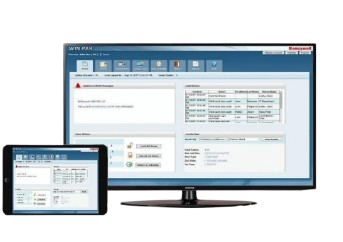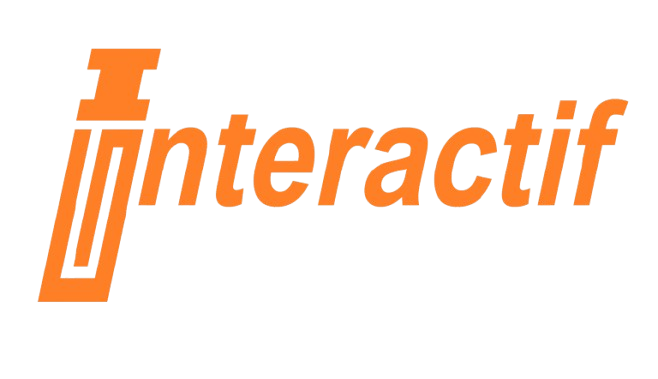SME OFFICES

WIN-PAK 4.9
PRODUCT DESCRIPTION
WIN-PAK 4.9 provides an intuitive browser-based interface, enabling users to perform common access control actions. It integrates seamlessly with video verification and surveillance, supported by intrusion detection systems and fire notifications. WIN-PAK 4.9 scales easily from single-site deployments to multi-region enterprise solutions, accommodating multiple accounts and sub-accounts without user or site limitations.The system supports direct integration with HID’s Origo 2.0 Mobile Access® and Suprema® Biometrics. WIN-PAK’s API allows software developers to create custom integrations tailored to specific needs such as point-of-sale systems, visitor management, elevator control, and HR applications


WIN-PAK 4.9 provides an intuitive browser-based interface, enabling users to perform common access control actions. It integrates seamlessly with video verification and surveillance, supported by intrusion detection systems and fire notifications. WIN-PAK 4.9 scales easily from single-site deployments to multi-region enterprise solutions, accommodating multiple accounts and sub-accounts without user or site limitations.The system supports direct integration with HID’s Origo 2.0 Mobile Access® and Suprema® Biometrics. WIN-PAK’s API allows software developers to create custom integrations tailored to specific needs such as point-of-sale systems, visitor management, elevator control, and HR applications
FEATURES AND BENEFITS
- Eliminates Disparate Systems and Interfaces:
- Integrates access, video, intrusion, and fire* systems through a unified interface.
- Allows direct management of selected Suprema biometrics readers using controller/reader integration.
- Increases Situational Awareness, Eliminates Costly False Alarms:
- Disarms intrusion systems via any valid card swipe at an access control reader.
- Arms intrusion systems via a valid triple-swipe at an access control reader.
- Coordinates intrusion, access, or fire* events with video actions for enhanced awareness.
- Minimizes Maintenance and System Supervisory Costs:
- Customizable automated system reporting with email delivery.
- Performs daily access control tasks remotely via a web interface.
- Includes API for seamless integrations with third-party systems.
- Scales as Your Business Grows:
- Unlimited cardholders and system users.
- Unlimited sites and access points.
- Supports up to 40 recorders and 2,560 cameras.
- Minimizes Onboarding and Training Costs:
- Intuitive web interface for easy access management, with embedded help tools.
- Minimizes Server Deployment Costs:
- Supports VMware 6.5 to leverage existing IT infrastructure and server assets.
specifications
With an active and on-going Honeywell Software Support Agreement (SSA),
our customers will continue to take full advantage of product capabilities
and software version upgrades as well as product support.
*At an additional cost. Connect with your Customer Service representative for part numbers and pricing.
*Based on Honeywell business days
Note: Support for PRO42R1, PRO32R1 and PRO22R1 coming soon v 4.9.1 Service pack 1 onwards.
Request a Quote
Learn More From
Frequently Asked Questions
Multimode fiber commonly comes in 50/125 μm or 62.5/125 μm core/cladding dimensions, with bandwidth capacities ranging from 200 MHz to 2 GHz, depending on the grade. Multimode systems typically support transmission distances of up to 5 km, making them suitable for short- to medium-range applications.
In contrast, singlemode fiber—usually 9–10/125 μm—offers significantly lower attenuation and effectively unlimited bandwidth, supporting links over 150 to 200 km, especially when paired with optical amplifiers and advanced transceivers.
While singlemode fiber is less expensive per meter, its associated transceivers and equipment tend to cost more than their multimode counterparts. That said, singlemode devices are generally compatible with both singlemode and multimode fiber, whereas multimode equipment works only with multimode fiber.
Let me know if you’d like this turned into a quick-reference table or visual comparison—it’d make a solid inclusion for a fiber deployment guide.
The link budget is the difference between the transmitter’s output power and the receiver’s sensitivity. This budget must account for all signal losses along the path, including:
- Fiber attenuation due to the transmission medium
- Connector losses, such as those at patch panels or equipment interfaces
- Splice losses from mechanical or fusion joints
- Link margin, which provides a buffer for unforeseen variations
The link margin typically ranges from 2–3 dB in tightly controlled environments to up to 10 dB in more variable conditions. It is designed to accommodate:
- Component aging (e.g., light sources may degrade and lose up to 3 dB over time)
- Temperature variations affecting transmitter output or receiver sensitivity (up to 3 dB may be needed for thermal fluctuations)
- Physical cable damage and repair-induced losses (usually minor, but more relevant in harsh or industrial settings)
Always design your system for worst-case scenarios to ensure reliability. However, don’t overlook the best-case condition either—some optical receivers may exhibit erratic behavior if the incoming signal is too strong.
First, verify the optical signal strength along the link. Use an optical power meter to measure the received power at the fiber’s end point. Typical transmit levels range from –8 dBm to –15 dBm, while the receiver sensitivity is around –31 dBm, giving you a link budget of approximately 16 dB. This margin supports transmission distances of up to 10 km on singlemode fiber and about 3–5 km on multimode fiber.
If the measured power falls below the receiver sensitivity, there’s a strong likelihood of issues with the installed fiber. Ideally, initial OTDR readings should have flagged such faults.
If not, inspect the patch cords currently in use for possible defects or misalignment. A frequent oversight is the use of mismatched patch cords.
Multimode fiber types are classified by the ISO/IEC 11801 standard into five main categories: OM1, OM2, OM3, OM4, and OM5. Each type differs in core size, bandwidth, supported data rates, and maximum transmission distances. Here’s a quick breakdown:

- OM3 and OM4 are laser-optimized and widely used in modern data centers.
- OM5 supports shortwave wavelength division multiplexing (SWDM), enabling multiple wavelengths over a single fiber for higher capacity.
- All OM types are backward compatible in terms of connectors, but mixing core sizes (e.g., OM1 with OM3) can cause performance issues.
